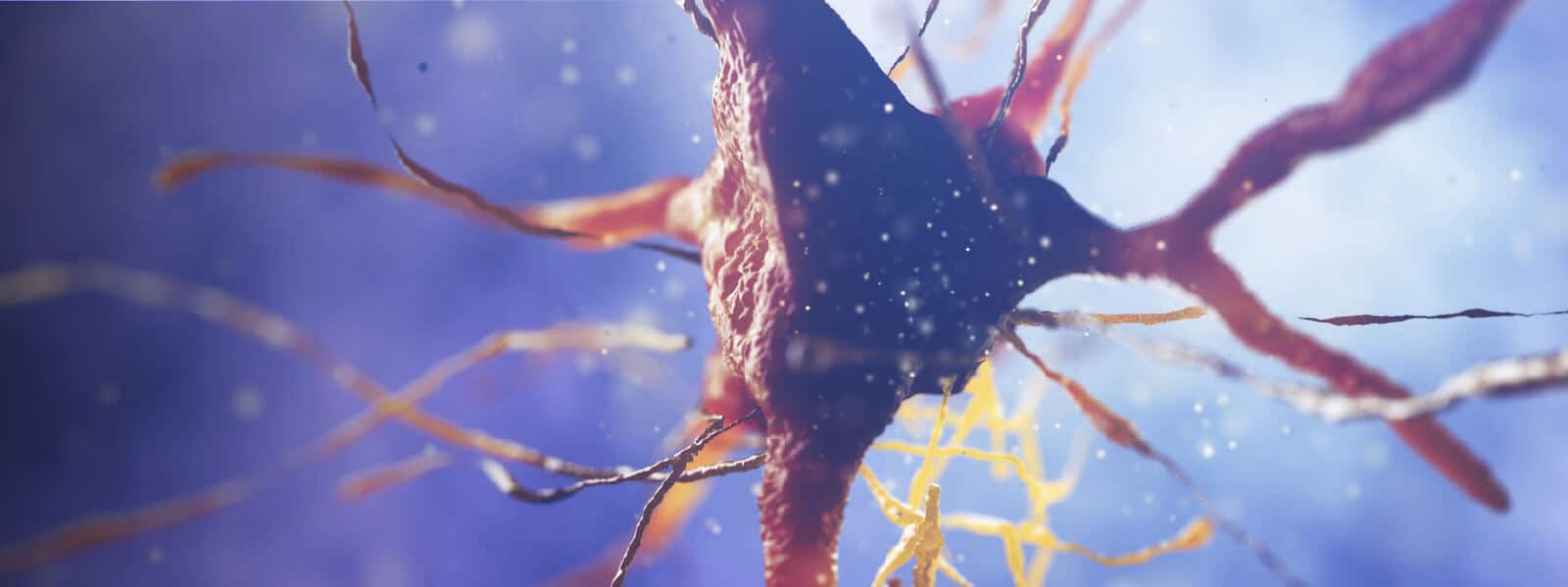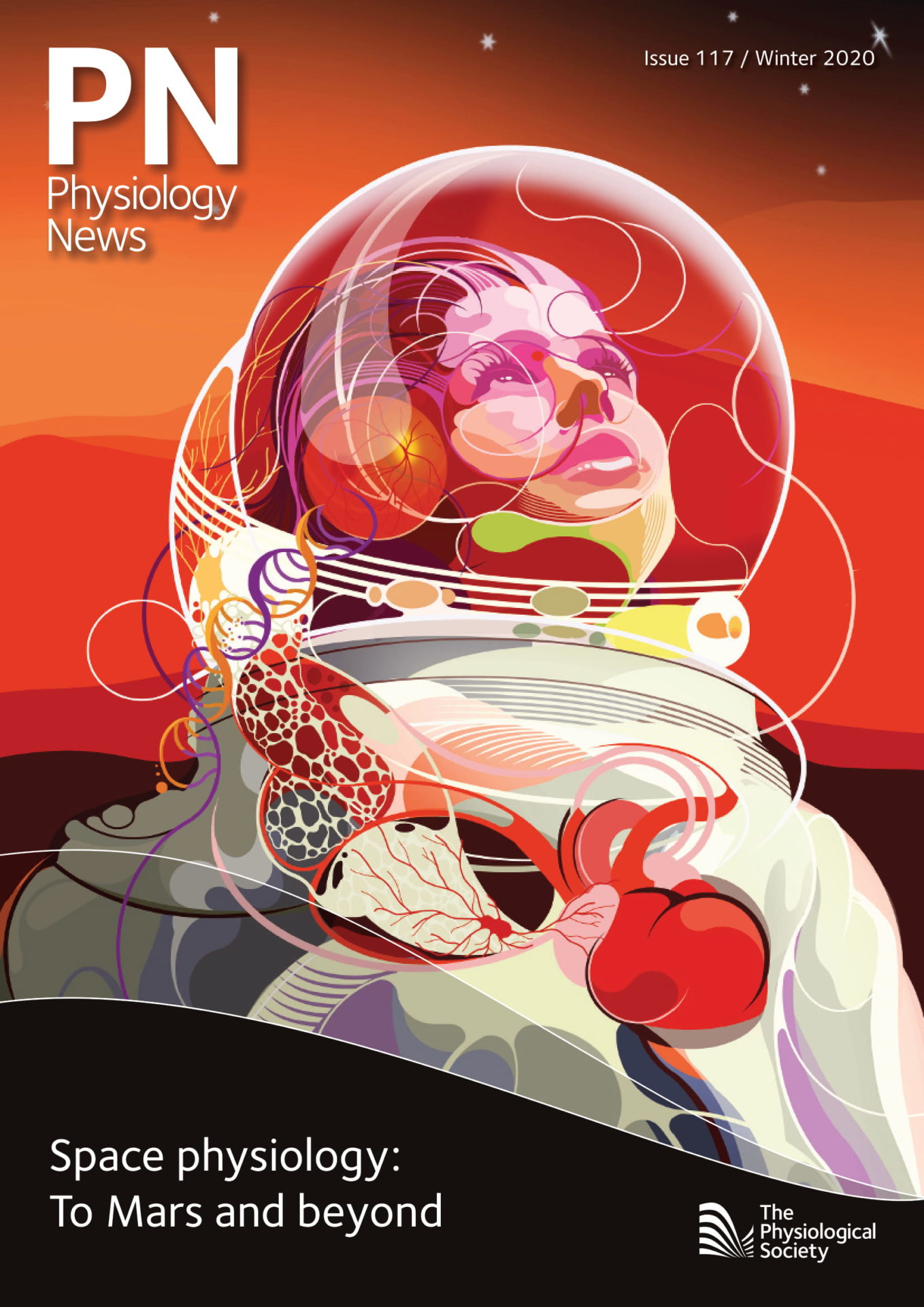
Physiology News Magazine
Telomeres and genomic instability during long-duration spaceflight
News and Views
Telomeres and genomic instability during long-duration spaceflight
News and Views
Nicholas A Vernice
Cornell University, NY, USA
Susan M Bailey
Colorado State University, CO, USA
Christopher E Mason
Cornell University, NY, USA
https://doi.org/10.36866/pn.117.17
The first astronauts for the American (1960) and Russian (1959) space programs demonstrated that spaceflight was physiologically possible for the human body, while also inaugurating a new era of human exploration of space. This led to current-day plans for missions to the Moon and Mars, which include new commercial and government agencies (e.g. China, India, Israel), and will involve months to years of exposure to spaceflight conditions. Yet, even as we commemorate 50 years since the first landing on the Moon, very little biomedical data exist on the health effects of long-duration spaceflight, since very few missions (n=8) have lasted for greater than 300 days. Indeed, only four individuals have ever participated in spaceflight missions lasting longer than one year. Thus, while the effects of short-duration spaceflight on the human body have been well documented, there is a paucity of data on the effects of long-duration spaceflight, and almost no data using modern methods in molecular biology. These fundamental limitations in our knowledge, concomitant with the emergence of several new, active spaceflight agencies, helped to inspire the NASA Twins Study: a multi-dimensional characterisation of the effects of a year-long spaceflight on the body(*1).
The NASA Twins Study is clearly limited in the sample size (n=1 per group), and thus the experiments were designed to create benchmarks that can be used in later missions to optimise crew health, improve in-flight collections, and to compare measures of acute or long-term flight risks. Data were generated across a myriad of modalities of human and microbial biology, including stool, saliva, skin, urine, and blood samples. The Study used a wide battery of measures, which included various whole-genome, RNA, and metagenome sequencing techniques, as well as proteomics and metabolomics, and numerous other techniques.
Blood analyses elucidated several physiological changes that long-term spaceflight has on the genome, including the impact on telomeres. Telomeres are repetitive nucleotide sequences found at the physical ends of eukaryotic chromosomes, which are critical for maintaining genome stability. During each cycle of cell division, telomeres shorten due to the end-replication problem, which results in the inability to replicate to the very end of newly synthesised lagging strands. As such, telomeres serve as “buffer zones”, preserving the genes that lie medial to them. However, because telomeres shorten with ageing, as well as with a variety of lifestyle factors and stresses, they eventually become so short that cells enter a state of senescence and stop dividing. This process is also associated with ageing-related pathologies such as cardiovascular disease and cancer. Interestingly, and contrary to expectation, the NASA Twins Study found that long-duration spaceflight resulted in a significant increase (~15%) in telomere length in the “space twin” as compared with his pre-flight and post-flight telomere lengths, as well as those of the “ground twin”. Given that the space twin’s telomeres dramatically shortened within 48 hours of returning to Earth, it is postulated that spaceflight-specific telomere elongation may have occurred in response to galactic cosmic radiation exposure; results are consistent with one other ISS study in C. elegans(*2). It is also worth noting, however, that while the space twin’s average telomere length stabilised to approximately his pre-flight levels, cell-by-cell FISH analysis revealed an increased number of short telomeres post-flight, potentially suggestive of ongoing damage, instability, accelerated ageing and/or future adverse health effects.
DNA methylation has also become a widely used proxy for assessing the ageing process, with methylation “clocks” being used successfully to predict age and mortality in several different species. The addition of a methyl group to a DNA strand typically results in local cessation of transcription. Thus, methylation in a gene’s promoter region is related to reduced expression of that gene, and is a common epigenetic marker of gene expression regulation. While genome-wide methylation changes in the space twin were within the range of variation of those of the ground twin, gene ontology enrichment analysis revealed enrichment of epigenetic discordance in several genes indicative of immune stress. Thus, as with previous studies demonstrating changes in the immune system of astronauts, this is an area for continued surveillance and focus on future long-duration missions.
Indeed, and as expected with any significant physiological stress, thousands of genes changed their expression levels during spaceflight, including pathways related to telomere maintenance, immune (T-cell) activation, and DNA repair. Moreover, of the genes that changed expression in spaceflight, ~91% returned to normal ranges within 6 months post-flight. While the overwhelming majority of transcriptional changes returned to pre-flight levels, a distinct subset of 811 genes involved in either immunity or DNA damage remained altered post-flight, which has provided insight into candidate genes that are more susceptible to extended spaceflight and which may be driving the continued re-adaptation to gravity.
DNA repair pathways and re-acclimation mechanisms are likely confounded as part of the normal response of returning to gravity, but evidence of DNA damage was observed. In the analysis of genomic instability, the space twin demonstrated increased frequencies of chromosome aberrations, particularly inversions (i.e. rearrangements within chromosomes), during spaceflight: a finding consistent with exposure to ionising radiation, particularly high linear energy transfer (LET) cosmic radiation3,4. Moreover, the space twin’s chromosomal inversion frequencies remained elevated post-flight, suggesting continued instability and possibly radiation-induced DNA damage to multipotent haematopoietic stem cells of the bone marrow, which could have a long-term impact on the genetic health of both myeloid and lymphoid fractions. Thus, even longer spaceflight missions should involve an expanded focus on the haematopoietic systems.
While a full discussion of the results presented in the Twins Study is beyond the scope of this article, it is worth noting that the Study evaluated the effects of long-duration spaceflight on several other physiological areas as well. For example, in its assessment of the immunome, the Twins Study revealed that inoculation with an annual flu vaccine in space, as well as subsequent inoculation on Earth the following year, were both successful in initiating an appropriate T cell-mediated response in the space twin, thereby suggesting that the immune system’s defenses are not functionally impaired by microgravity. A cognitive assessment revealed no dramatic changes in the space twin’s higher cortical functions during his time in space with respect to the ground twin; upon landing, however, the space twin exhibited a pronounced decrease in speed and accuracy while performing cognitive tasks which persisted for six months upon re-acclimation. Additional analyses demonstrated that the space twin’s spaceflight resulted in a 7% decrease in body mass, a dynamic osteocyte turnover rate which first increased and then stabilised during the latter six months of flight, increased inflight folate and urinary lactic acid levels, increased inflight mitochondrial DNA and ATP-dependent respiration, and increased carotid artery intima-media thickening that persisted into the post-flight period, among other findings. Additionally, the NASA Twins Study determined that cephalad fluid shifts observed in the space twin corresponded to retinal oedema, as well as elevations in urinary aquaporin-2 (AQP2): a protein involved in regulation of water resorption that might be implicated in the pathogenesis of ophthalmologic disorders observed during and after spaceflight.
In summary, the Twins Study demonstrated that the human body is extraordinarily adaptive to the changes incurred during a one-year mission, and that it should be possible to survive the transit to Mars and then return back to Earth. However, the long-term health effects of long-duration spaceflight are exceedingly difficult to assess, and more work must be done to examine whether physiological effects, such as post-flight telomere shortening, stem cell alterations, and/or genomic instability have detectable long-term adverse health effects on individuals exposed to the space environment for prolonged periods of time.
References
- Garrett-Bakelman FE et al. (2019). The NASA Twins Study: A multidimensional analysis of a year-long human spaceflight. Science 364(6436), eaau8650. DOI: 10.1126/science.aau8650
- Zhao Y et al. (2006). A mutational analysis of Caenorhabditis elegans in space. Mutation Research 601, 19 – 29. DOI: 10.1016/j.mrfmmm.2006.05.001
- Ray FA et al. (2014). Directional genomic hybridization: Inversions as a potential biodosimeter for retrospective radiation exposure. Radiation and Environmental Biophysics 53, 255 – 263. DOI: 10.1007/s00411-014- 0513-1
- Cornforth MN, Durante M (2018). Radiation quality and intra- chromosomal aberrations: Size matters. Mutation Research 836(part A), 28 – 35. DOI: 10.1016/j.mrgentox.2018.05.002
